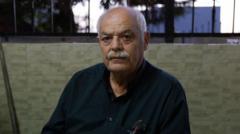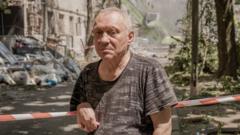**In the wake of intensified airstrikes by Israel on Iran, the humanitarian toll has become increasingly severe, as reports of civilian deaths continue to mount, sparking outrage and grief.**
**Escalating Conflict: Israeli Airstrikes Claim Innocent Lives in Iran**

**Escalating Conflict: Israeli Airstrikes Claim Innocent Lives in Iran**
**As tensions rise, recent Israeli strikes have resulted in civilian casualties in Iran, igniting international concerns.**
Israeli airstrikes have been met with devastating human cost in Iran, with reports indicating the loss of hundreds of civilian lives, including individuals from diverse backgrounds such as a renowned poet, an equestrian champion, and a graphic designer. While Israel insists its military operations target specific military assets and individuals, the civilian casualties tell a different story.
Among those lost are children, elderly grandparents, and vibrant young professionals—each casualty raising further questions about the nature and implications of the ongoing conflict. Reports from Iran's Ministry of Health have revealed that at least 224 people were officially confirmed dead, along with nearly 2,000 injured, numbers that are expected to rise as assessments continue in the wake of ongoing strikes.
Interviews with residents across cities like Tehran, Shiraz, and Mashhad have narrated harrowing experiences, illustrating the chaotic and deadly impact of the strikes. Families, friends, and health officials painted a grim picture as they shared accounts of lives shattered and neighborhoods devastated.
The Israeli Defense Forces maintain that their actions focus on targeting military leaders, nuclear scientists, and officials tied to Iran's military infrastructure. However, the broad scope of the strikes has resulted in considerable collateral damage, with Dr. Hossein Kermanpour of the Iranian Ministry of Health reporting that a staggering 90 percent of casualties are civilians.
The continuous sound of airstrikes has created a stark contrast to the usual vibrancy of Iranian cities. The chaotic symphony of sirens, explosions, and air defenses has overtaken what was once a lively urban landscape characterized by bustling streets and cultural vibrancy.
As details of the civilian toll emerge, the overall humanitarian implications of the conflict become ever more concerning, highlighting the pressing need for dialogue and peace in a region plagued by violence.





















